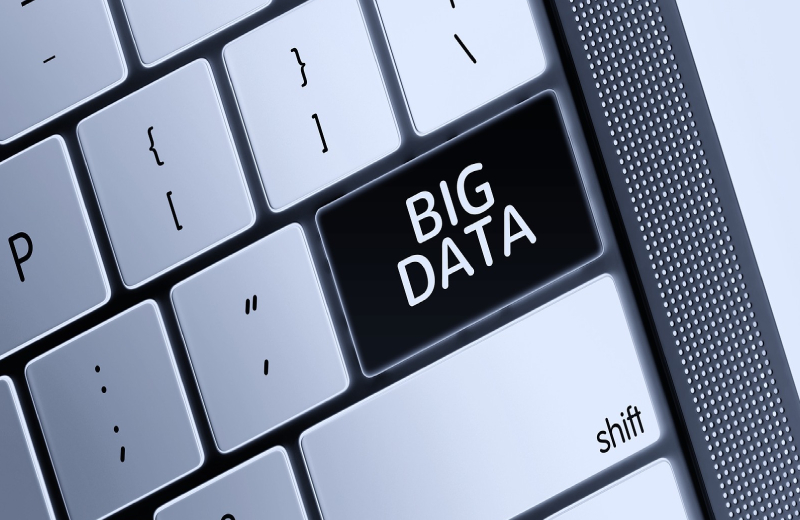
Big data is the currency that now runs the world. But the applications of this incredible tool go far beyond business. When the COVID-19 pandemic made its way across the globe, big data was there to help scientists track the spread and derive helpful recommendations. All the uses and benefits of large-scale datasets have had a big impact on epidemiology, care, and public health solutions during the pandemic. This is because big data — even in the absence of more specific data — can lead to actionable insights in the face of large-scale problems.
Applications for big data in combating COVID-19
Big data has redefined how we interact with the global economy. It has redirected business efforts, shifted the ways we formulate business intelligence, and most importantly, it has created unprecedented access and awareness of important healthcare information. This goes to show the importance of data in the modern information economy as we act to save human lives.
Understanding how data applies to medical situations can be tricky as pandemic viruses aren’t like other customer behaviours. Data science may come in handy when determining how to generate new sales leads, but how can it help in fighting the spread of viruses? Fortunately, big data and the many tools available for utilising it have transformed epidemiology and the means of treating endemic diseases.
Uncovering new treatments
There is little that big data supports more than clinical research. Since this type of research is based on empirical, quantifiable results structured within carefully controlled phases, any big data created or applied within these studies have the potential to derive real, repeatable solutions. This is because legitimate data reveals insights into the ways the human body functions and reacts to treatment.
Researchers were quick to utilise big data to look for new ways to combat COVID-19 when the virus emerged. In one instance, scientists from Columbia University began a start-up called EVQLV dedicated to the creation of COVID treatments through computationally generating hundreds of millions of potential antibodies. Such a system is necessary for comparing and testing all the variables associated with treating a virus-like COVID-19 and reducing the likelihood of drug-discovery failure.
It was precisely the work of data scientists like these that gave us functional vaccines and medicines in such a short space of time. The human body is incredibly complex, and only big data offers the scope researchers need to analyse and innovate ideal treatments.
Improving outreach
Optimising these new treatments isn’t the only aspect of epidemiology that big data stands to improve. Reaching out to the public with messages about risk factors, vaccine eligibility, and safe practices have all been supported by data-driven practices.
Using data from the North Carolina Health System, researchers identified patients who were already receiving cancer treatment but did not have an active email or patient portal or lived in a country with higher than a 20% poverty rate. As a result of this identification, vaccine information was sent out to 536 potentially marginalised patients who might otherwise not have known about their resources.
Improving patient outreach is just one of the many ways big data has helped medical professionals manage the pandemic. However, just as the internet can help spread information through data, it can also help spread misinformation that threatens the good work being done in fighting COVID-19.
Fighting misinformation
Misinformation campaigns are a big problem in the fight against the pandemic. In fact, fake news about vaccines, treatments, and preventative solutions may even be a factor driving the ever-increasing COVID-19 death numbers. While the underlying problems in the media and human psychology make fighting these misinformation campaigns difficult, big data has actually made a difference.
Scientists at the University of Southern California have taken to studying the spread of COVID-19 information through social media big data. They’ve set up an “infodemic observatory” that makes use of automated software to watch 4.7 million tweets per day. This way, they hope to better understand how fears and misinformation spread and in turn create messaging and algorithms that better flag these issues.
Big data offers us unprecedented information on how both viruses and people work. By applying this insight to the spread of misinformation, we can devise more useful tools for promoting an informed populace. As a result, we can better prevent pandemics in the future.
The potential of data-driven health solutions
Big data is immeasurably powerful. The solutions possible through big data insights include personalised care and even better methods of communication for important medical notices. But these applications of big data as we’ve seen them throughout the COVID-19 pandemic are only the beginning.
Big data has innumerable applications in the healthcare industry. From epidemiology to patient outreach, the potential of this tool might just revolutionise healthcare on the whole. Care professionals and data scientists can run a well-planned brainstorming session with big data at its core to determine all the ways big data can still be applied in fighting COVID-19 now and preventing pandemics in the future.
By Gary Allemann, Managing Director at Master Data Management
Edited by Zintle Nkohla
Follow Zintle Nkohla on Twitter
Follow IT News Africa on Twitter